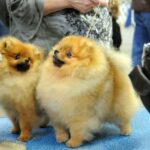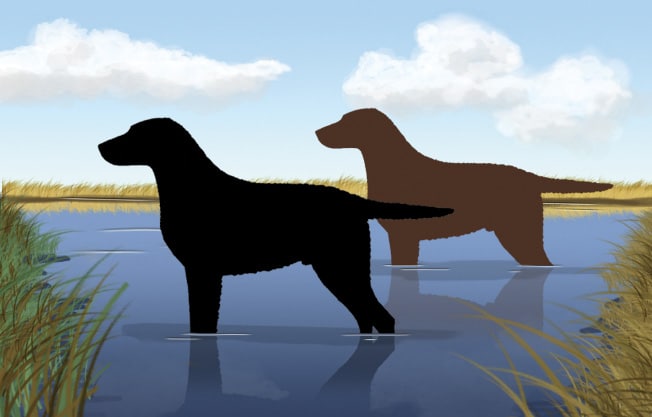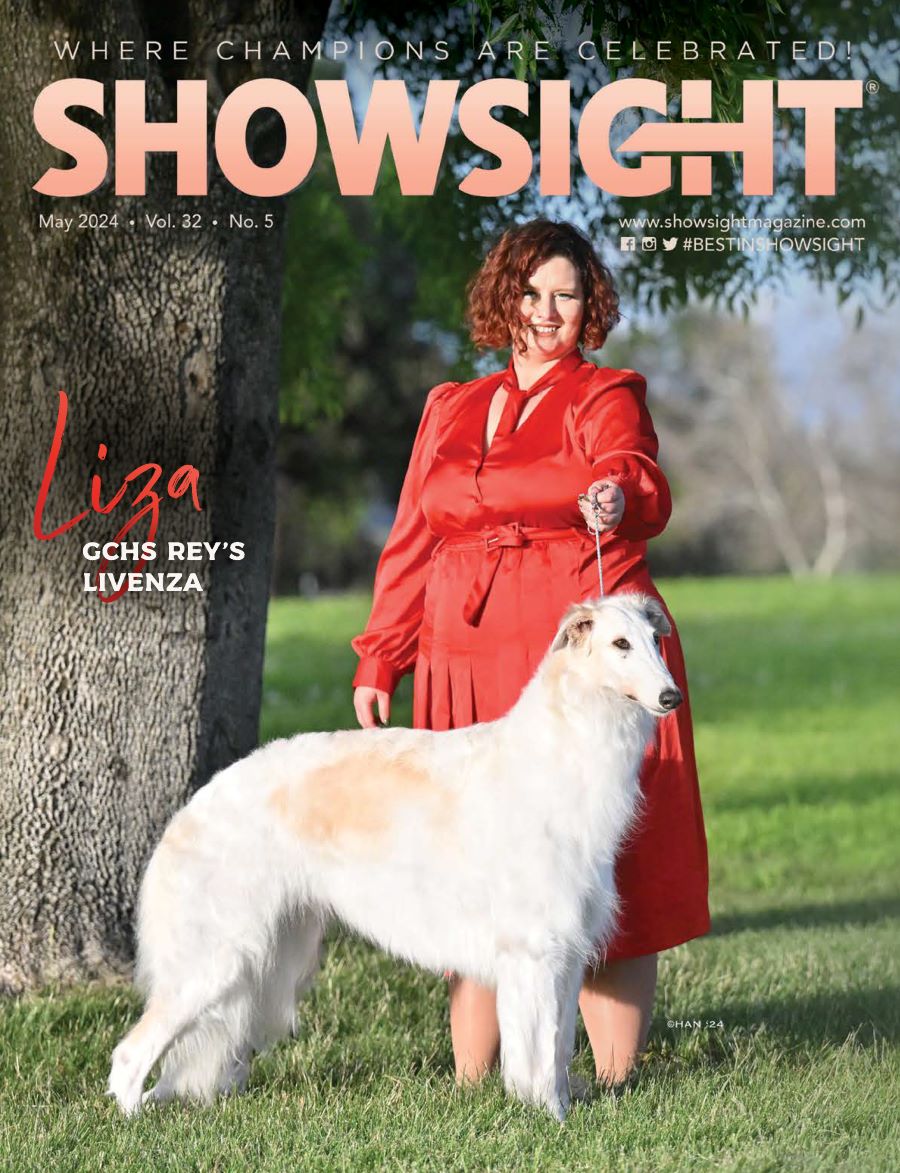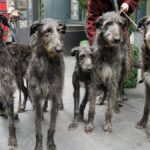The Curly-Coated Retriever has a unique profile that distinguishes it from other breeds. The characteristic silhouette of an erect, upstanding, athletic-appearing Curly-Coated Retriever is achieved through the body shape, proportion, and substance, coupled with the head and tail, that create a distinctive outline.
In order to perform as a multi-purpose hunting retriever that is strong, robust, quick, and agile, the Curly must have the body of a true athlete. A Curly may be asked to retrieve large geese in freezing waters one day, and the next day be required to find, flush, and retrieve a pheasant or rabbit in the field or bog. All parts comprising the conformation of this canine athlete must aid in the accomplishment of its hunting tasks in variable environments. There is nothing frivolous or unnecessary in the components required for this workman-like breed. The distinctive Curly outline gives us our first impression of the power, athleticism, balance, and symmetry needed to be a functional hunting companion.
The headpiece is wedge-shaped from the side, showing equal length between muzzle and backskull, with parallel planes. The neck is strong and slightly arched, flowing smoothly into moderately laid-back shoulders. The chest appears decidedly deep, with the forelegs set under those shoulders (withers). The ribcage extends well back into the body, with a moderate tuck-up underneath (flank) and a deep, muscular, short loin. The hindquarters consist of strong, powerful thighs, with a moderate bend of stifle and well-let-down hocks. The tail is straight. The overall body appearance or package should appear strong, robust, and athletic.
Curly-Coated Retrievers are generally known as the tallest of the retrievers. You would determine the height of a Curly by measuring from the ground, straight up the foreleg to the upper tips of the scapula, also known as the withers. At the highest point of the withers, males can range in size from 25 to 27 inches, and females are between 23 to 25 inches. To give a point of reference for this desired size range among other gundog breeds, the maximum height of a Golden Retriever or Labrador Retriever male is 25 inches, which is the minimum height for a Curly male. Hence, the Curly should appear taller than either of those breeds. Weimaraner males should be 25-27 inches and Gordon Setter males between 24-27 inches. This indicates that our Curly’s range of 25 to 27 inches for males suggests a taller than average, powerful gundog and the tallest of the Retrievers.
Curlies are allowed to be outside of this desired range, but we have a necessary requirement in our standard, which states that Curlies outside of this desired range must be superior specimens in every other aspect of their conformation, with the key word here being “superior,” never ordinary.
Proportion is an integral aspect of the outline. The Curly-Coated Retriever’s body appears slightly off-square, meaning it is only slightly longer from prosternum (prominent bump in the middle of forechest) to his buttocks than he is from withers to ground. The depth of chest from withers to elbow should equal the length of leg from elbow to ground. Hence, when comparing length to height, the Curly gives the impression of being higher on leg than other Retrievers, more upright, never appearing long or low-stationed. This characteristic upright appearance, or silhouette, adds to the smartly upstanding quality so desired in our breed. This upstanding feature gives the breed a certain nobility, a presence, if you will, and a proud carriage radiating self-confidence. Long cast, tubular appearing, long of loin or short of leg specimens are never desired. Additional, undesired length of body proportions usually come from too much length in the loin. And though these specimens with long loins may move well in the show ring, they are definitely not correct for the Curly-Coated Retriever. The overall ideal body length is achieved because the ribs extend well back to a short loin, providing plenty of lung room for arduous days of hunting.
Additionally, Curly-Coated Retrievers must have sufficient bone, mass, and substance to balance their height as well as to benefit their power and durability in the field, navigating punishing cover, heavy currents, and difficult terrain. Their substance should be sturdy and robust, with nothing overdone, coarse or blocky. And neither should the Curly ever appear weedy, light of bone, frail or racy. Elegance and grace are achieved through the upstanding carriage and longer length of legs than the other Retrievers. The Curly will have more bone, mass, and substance than the Poodle, the Flat-Coated Retriever, and the Gordon Setter, but not as much mass as a Bernese Mountain Dog or Mastiff. Hence, a 27-inch male would weigh about 95 pounds and the smallest 23 inch bitch should weigh at least 60 pounds. The Curly is not a lightly built or a bulky breed of dog. Rather, the breed displays the construction of an all-around athlete capable of spending grueling days retrieving in water or in the field in search of prey.
All of these aspects of body, height, proportion, and substance blend together in a smooth, powerful, harmonious symmetry that gives the Curly-Coated Retriever its unique outline and silhouette.
(As an interesting side note, the FCI standard and the entire rest of the world desires the Curly-Coated Retriever males to be 27 inches and bitches to be 25 inches. Only the AKC standard allows for a range of heights. Also, the FCI calls for a forechest that is visible.)










